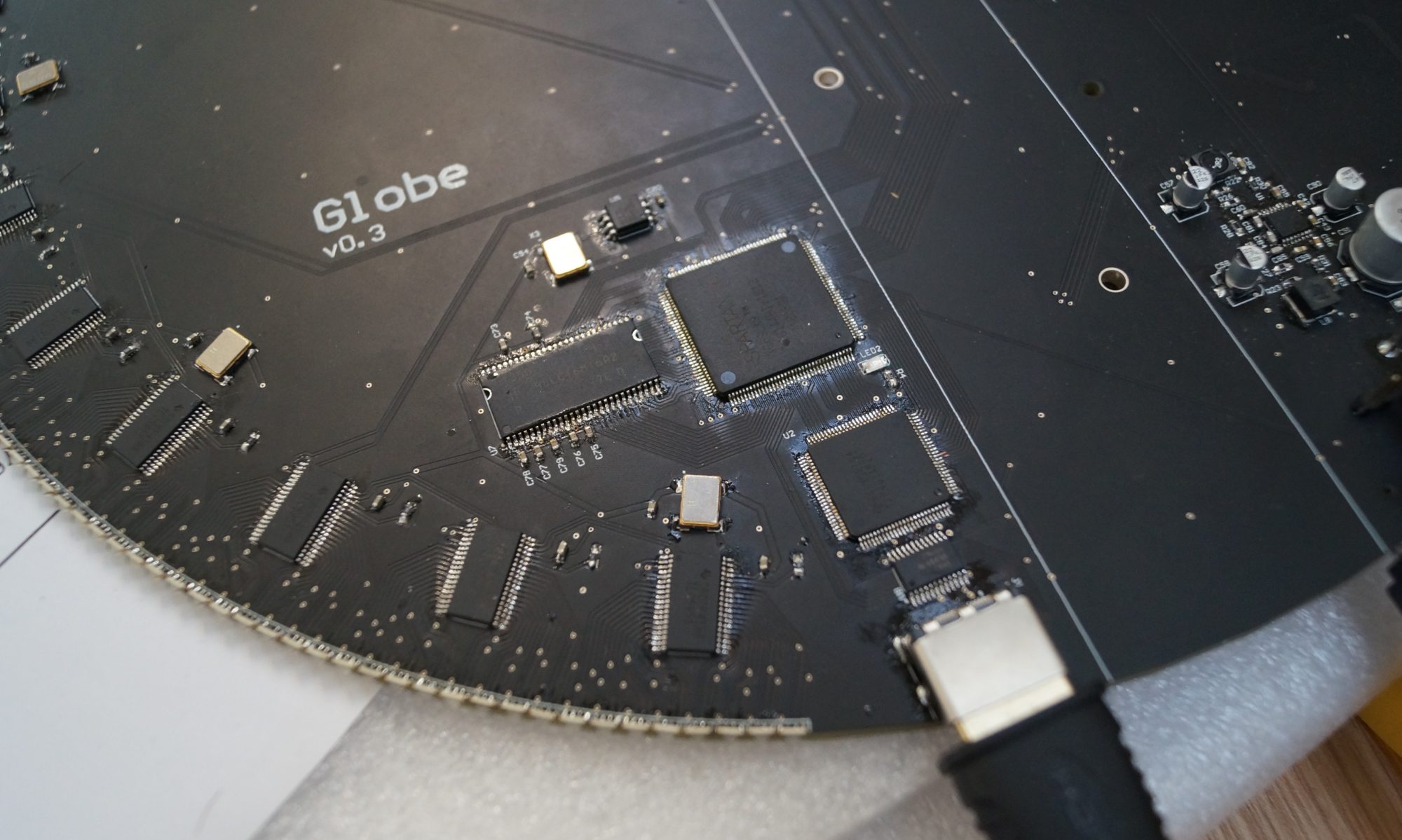The difficulty with the resolution is that at the end of the day it all comes down to size. More LEDs require more board space, more board space presents a much greater mechanical challenge and costs more money.
MKI used 5mm clear through hole LEDs due to cost and ease of use. If these are all packed in as tightly as they possibly can and interlaced, then the minimum PCB diameter required to accommodate them can be calculated as:
D = (N*5)/Pi
without taking into consideration shaft diameter. In hindsight diffused LEDs should have been used; clear LEDs provide very small points of light, rapidly losing luminosity as viewing angle increases i.e towards the edges of the sphere. I took a brillo pad to them in an effort to diffuse them which was fairly successful but far from perfect. If diffused LEDs were used then the calculation becomes:
D = (2*N*5)/Pi
meaning even the original LED resolution would require a PCB with diameter of at least 407mm.
For Globe I switched from through hole LEDs for which the smallest RGB versions are 5mm to domed right angle surface mount. These have a body length of 3.2mm but a dome of only 2mm. By once again interlacing the calculation for diameter becomes:
D=2*N*2/PI
meaning we could fit our original 128 LEDs onto a ~165mm PCB…or cram even more LEDs onto a PCB of the same size.
Because PCB is generally paid for by the square cm/inch, the cost increases exponentially with diameter. Realistically I didn’t want to push the diameter much beyond 300mm MKI, having used a PCB of similar size previously and the cost just becoming silly otherwise. If we rearrange our calculation we can calculate the amount of LEDs we could fit on a board of that size to:
N = (D*Pi)/(2*2)
If we account for a 40mm shaft + an additional 60mm for peripheral connections this becomes:
N = ((D*Pi)-100)/(2*2)
With a strict board size of 300mm this would yield an LED count of 210. Fudge the numbers a little bit and we can achieve an LED count of 240, board diameter of 310mm with the bottom 10% of PCB being taken up with connections. This means that the displays imagined resolution is 270 which is a convenient factor of 1080, so what you see is a vertical resolution divided by 4 with the bottom 30 pixels cut off.
Mark I had an resolution of 1024 x 128 yielding a total pixel count of 131,072. Globe has a resolution of 1920 x 240 yielding a total pixel count of 460,800.
Depending on how funding does I will investigate the possibility of switching to flex PCB bent round the outside of a hoop. This would mean I could switch over to some very small 1x1mm LEDs with a lens of only 0.6mm meaning it would be possible to fit 2 or 3 times the number of LEDs onto the same diameter display, or with an increase to 400mm possibly even 4 times this meaning a full HD resolution might be achievable…
